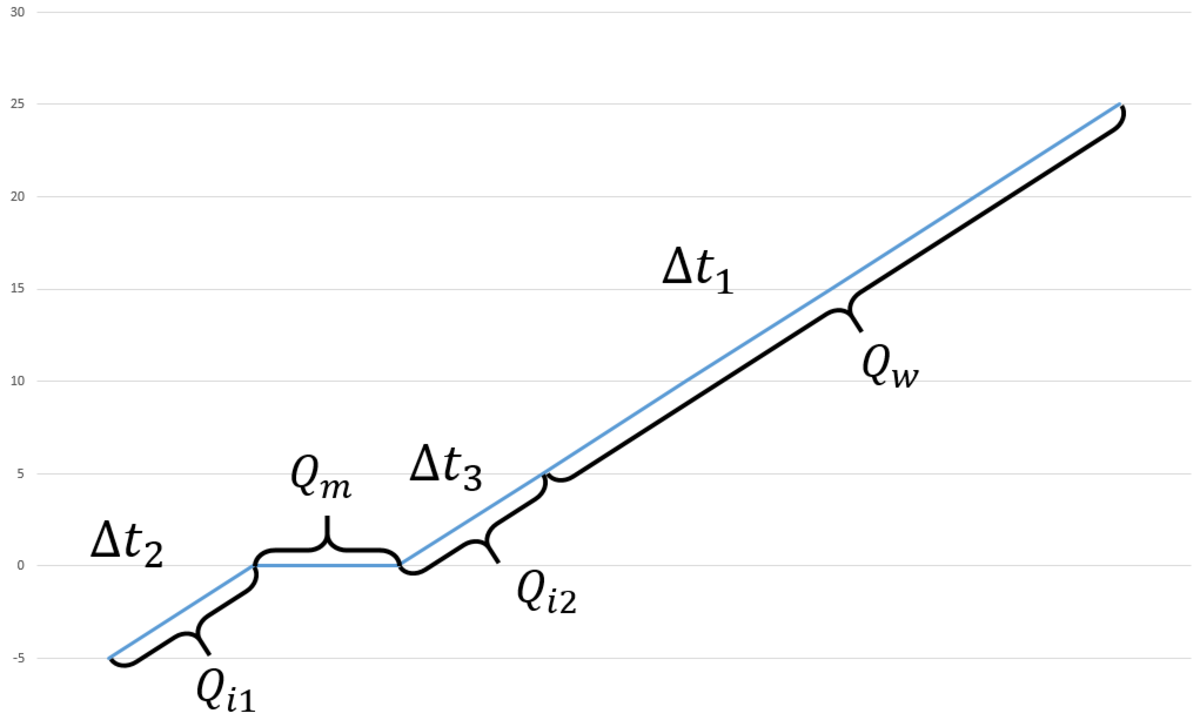How many ice cubes?
How many ice cubes do you need to cool down
water from
to
, if each cube is
and
?(You drop them into the water)
Here are some constants:
If your answer is in format, where , then enter , else if enter .
A. P. Rimkevics -Physical task collection: 656(new)
The answer is 8.
This section requires Javascript.
You are seeing this because something didn't load right. We suggest you, (a) try
refreshing the page, (b) enabling javascript if it is disabled on your browser and,
finally, (c)
loading the
non-javascript version of this page
. We're sorry about the hassle.
My "markup language": V- the volume of one ice cube, N- the number of ice cubes, w=water and i=ice. In this picture you can see the processes
In this picture you can see the processes
Q w = Q i 1 + Q i 2 + Q m c w m w Δ t 1 = c i m i Δ t 2 + c w m i Δ t 3 + L i m i c w m w Δ t 1 = m i ( c i Δ t 2 + c w Δ t 3 + L i ) c i Δ t 2 + c w Δ t 3 + L i c w m w Δ t 1 = m i ρ i V i = c i Δ t 2 + c w Δ t 3 + L i c w m w Δ t 1 ρ i V N = c i Δ t 2 + c w Δ t 3 + L i c w m w Δ t 1 N = ρ i V ( c i Δ t 2 + c w Δ t 3 + L i ) c w m w Δ t 1 N = 9 0 0 ⋅ 6 . 4 ⋅ 1 0 − 6 ( 2 1 0 0 ⋅ 5 + 4 2 0 0 ⋅ 5 + 3 . 3 ⋅ 1 0 5 ) 4 2 0 0 ⋅ 0 . 2 ⋅ 2 0 N = 5 , 7 6 ⋅ 1 0 − 3 ⋅ 3 6 1 5 0 0 1 6 8 0 0 ≈ 8
P.S. N ∘ 1 If somebody want to say N > 8 : L i = 3 . 3 3 4 ⋅ 1 0 5 k g J , therefore N < 8 .
P.S. N ∘ 2 I doubt anyone likes to read Soviet books, but I would like note that in the book the solution is 9. I think this is only a typo.